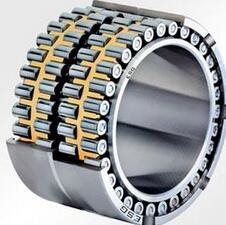There are many types of bearings and a wide range of sizes. In order to select the most suitable bearing that meets the design or use requirements, it needs to be from the mechanical use conditions, the performance requirements of the bearing, the specifications around the bearing, and even the marketability and economy. Conduct a comprehensive analysis. The general practice of bearing selection is to determine the shaft diameter before selecting the bearing. Therefore, the bearing inner diameter must be taken as the reference and the bearing installation space and configuration method should be considered to determine the bearing type. Second, analyze and compare "bearing life required by machinery" and "bearing life calculated by bearing load" to determine the size of the bearing. Then determine the internal specifications of the bearing such as accuracy grade, internal clearance, cage, lubricant, etc. according to the needs. Of course, the selection of bearings does not necessarily follow the prescribed procedures, but should be based on the most important performance requirements.
When the TIMKEN bearing rotates under load, because the raceway surface of the ring and the rolling surface of the rolling element are constantly subjected to alternating loads, even if the conditions of use are normal, the raceway surface or the rolling surface will appear scale-like damage due to material fatigue (called For peeling or peeling). The total number of revolutions before this rolling fatigue damage occurs is called the "(fatigue) life" of the bearing. Even if the structure, size, material, processing method, etc. of the bearing are exactly the same and rotate under the same conditions, there will still be a big difference in the (fatigue) life of the bearing. This is because the material fatigue itself is discrete, and the life of the bearing should be considered from a statistical point of view. Therefore, it is stipulated that when a batch of the same bearings are rotated under the same conditions, the total number of revolutions at which 90% of the bearings do not show rolling fatigue damage is called the "basic rated life of the bearing" (that is, the life of 90% reliability) . When rotating at a fixed speed, it can also be expressed by the total rotation time. However, in actual work, there will also be rolling fatigue damage accidental damage phenomena, such as wear, burns, creep, abrasion, indentation, fracture, etc. These damages can be avoided by making bearing selection, installation and lubrication. However, excessive extension of bearing life may not be economical, and it is best to set the mechanically required bearing life according to the operating conditions.






